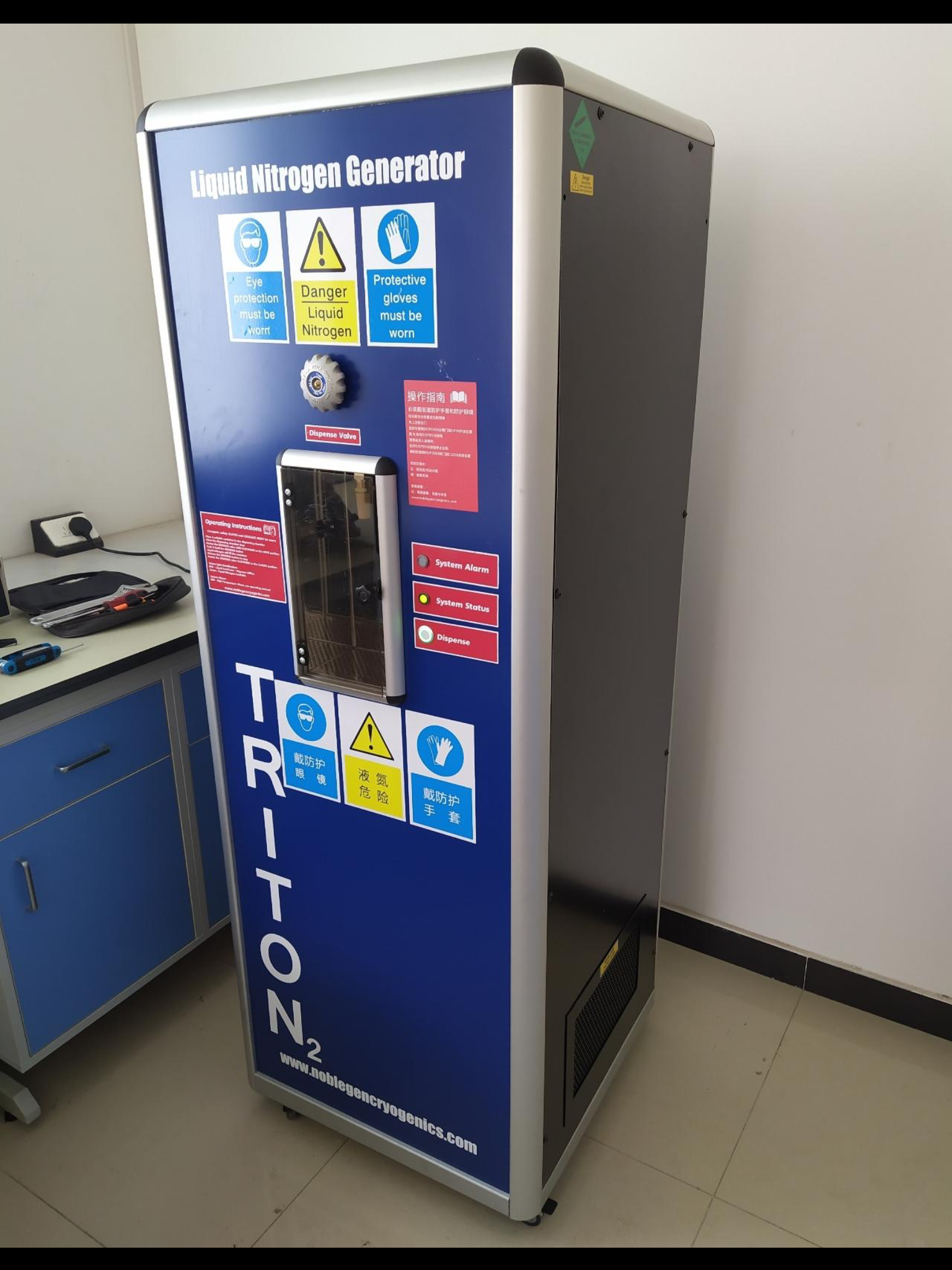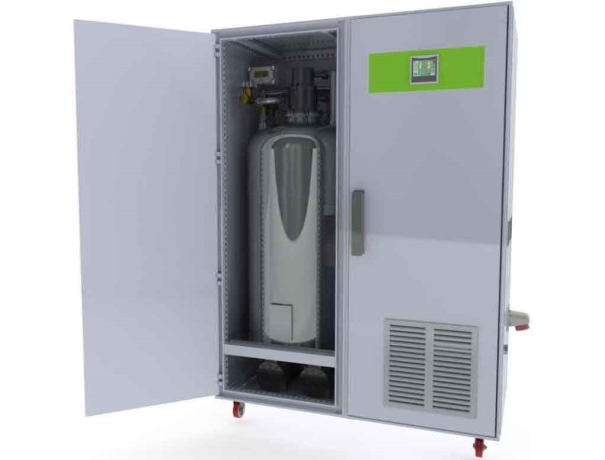The Liquid Nitrogen Generator is your reliable and efficient on-site plug and produces a cryogenic solution. With a small footprint, low power consumption and no need for cooling water or water chiller make the TRITON2+ and Triton-2 the best solutions available on the market. With integrated cooling fans can operate with air cooling up to +32°c ambient temperatures making it suitable to operate in most parts of the World. Simply connect the power and press start for the machine to automatically produce liquid nitrogen when needed. The safe front flask dispenser makes dispensing LN2 safer than ever with other options such a s a rear hose connection available to connect to freezers.This makes it possible to cryopreserve important biological samples in a stable and reliable manner. Nitrogen is used primarily:food industry, Medical treatments, and Also Liquid nitrogen used for medical cooling systems for the preservation of cord blood tissue and eggs

Choosing the Right Liquid Nitrogen Container for Specific Applications
Research Laboratories
Research laboratories often require containers with features tailored to their specific needs, such as easy accessibility, precise temperature control, and compatibility with various sample formats.
Medical Facilities
In medical facilities, the emphasis is on safety and reliability. Containers used for storing biological materials in healthcare settings must adhere to stringent standards to ensure the well-being of patients and the integrity of samples.
Uses Liquid nitrogen container for laboratory
Liquid nitrogen containers are widely used in laboratories for various applications due to their ability to store and transport liquid nitrogen at extremely low temperatures. Here are some common uses of liquid nitrogen containers in a laboratory setting:
Sample Storage:
Used to store biological samples, such as cells, tissues, and genetic materials, at ultra-low temperatures. This helps preserve the samples for long periods without degradation.
Cryopreservation:
In reproductive biology, liquid nitrogen containers are essential for cryopreserving sperm, eggs, and embryos. This is crucial in assisted reproductive technologies (ART) and fertility preservation.
Cell Culture:
Some cell culture applications require rapid freezing of cells for preservation. Liquid nitrogen can be used for this purpose, allowing researchers to maintain a stable and viable cell line.
Cryogenic Grinding:
In materials science and chemistry, samples may be ground to a fine powder using cryogenic grinding. Liquid nitrogen is used to cool and embrittle samples, making them easier to grind.
Cooling and Trapping:
Used as a cryogenic coolant for various instruments and experiments. It is employed to cool down and trap certain gases or compounds for analysis.
Freezing and Shrink Fitting:
Liquid nitrogen can be used in the process of freezing and shrink fitting components together. This is common in mechanical and engineering applications.
Thermal Testing:
In thermal testing of materials and electronic components, They are used to achieve low temperatures for assessing performance under extreme conditions.
Cryogenic Bath:
Liquid nitrogen containers can function as cryogenic baths for immersing samples or equipment in extremely cold temperatures, enabling precise temperature control.
Cryogenic Distillation:
In chemistry and chemical engineering, They are used in cryogenic distillation processes to separate and purify gases based on their different boiling points.
Instrument Calibration:
Some scientific instruments require precise temperature control for accurate calibration. Liquid nitrogen can be used for this purpose.
Cold Traps in Vacuum Systems:
In vacuum systems, Its often used in cold traps to condense and capture volatile gases, preventing them from contaminating the vacuum pump.

what are Applications of Liquid Nitrogen Generators?
A liquid nitrogen generator produces nitrogen in its liquid form, which is used in a wide range of industries and applications. Some key applications include:
Cryopreservation: Liquid nitrogen is commonly used for storing biological samples, such as cells, tissues, and reproductive materials like sperm and embryos, in medical and scientific research.
Cryosurgery: It is used in medical procedures to remove abnormal or diseased tissue, such as in the treatment of warts, skin cancers, or other skin conditions.
Food Processing: In the food industry, liquid nitrogen is used for freezing and preserving food quickly. It ensures minimal cell damage, leading to better texture and quality in frozen foods.
Industrial Cooling: Liquid nitrogen can rapidly cool materials, which is helpful in applications like shrink fitting, where components are cooled to fit tightly into place when they expand at normal temperatures.
Cryogenics Research: In scientific research, liquid nitrogen is used to study materials at extremely low temperatures, including superconductivity and other cryogenic phenomena.
Metalworking: It is used in cryogenic tempering processes to enhance the strength and durability of metals, particularly in tools and machinery parts.
Electronics and Semiconductor Industry: Liquid nitrogen is used for cooling components in electronics manufacturing and testing, particularly when extreme precision is required.
Gas Separation and Purification: Liquid nitrogen is used in processes to purify gases or separate different gases, such as in the production of ultra-pure oxygen or nitrogen.
Art and Cultural Preservation: It can be used to preserve or restore old or damaged artifacts, such as removing pests from delicate items like books or textiles without causing harm.
Laboratory Use: In laboratories, liquid nitrogen is essential for cooling and freezing chemicals, samples, and other materials during experiments.